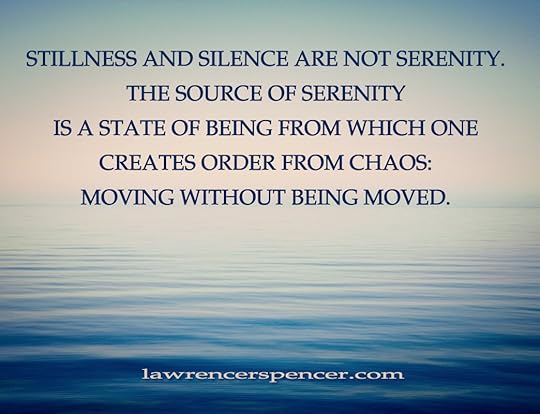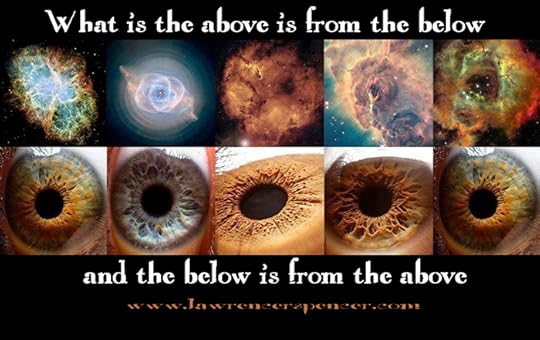Lawrence R. Spencer's Blog, page 185
March 5, 2021
Alien Interview on Exopolitics Radio, Part 3 « ALIEN INTERVIEW
March 4, 2021
TIME TRAVELING AROUND THE ROMAN EMPIRE
Republished by Blog Post Promoter
For ancient history geeks, like me, this video demostrates how to use the “Orbis” mapping system, from Stanford University, is the coolest history study tool invented for want-to-be time travelers. Here’s the link to the website: http://orbis.stanford.edu/“Spanning one-ninth of the earth’s circumference across three continents, the Roman Empire ruled a quarter of humanity through complex networks of political power, military domination and economic exchange. These extensive connections were sustained by premodern transportation and communication technologies that relied on energy generated by human and animal bodies, winds, and currents.
Conventional maps that represent this world as it appears from space signally fail to capture the severe environmental constraints that governed the flows of people, goods and information. Cost, rather than distance, is the principal determinant of connectivity.
For the first time, ORBIS allows us to express Roman communication costs in terms of both time and expense. By simulating movement along the principal routes of the Roman road network, the main navigable rivers, and hundreds of sea routes in the Mediterranean, Black Sea and coastal Atlantic, this interactive model reconstructs the duration and financial cost of travel in antiquity.
Taking account of seasonal variation and accommodating a wide range of modes and means of transport, ORBIS reveals the true shape of the Roman world and provides a unique resource for our understanding of premodern history.
March 3, 2021
THE GREAT RAMEN WAVE
Republished by Blog Post Promoter
I had Ramen noodles for lunch today. Later, I ran across this wonderful tribute to Hokusai. As a student of art, and oil painter myself, I have always admired the preeminent Japanese master of wood block prints. His best know work, “The Great Wave” has been imitated as much as any great art masterpiece in history. It is part of a series of prints featuring Mt. Fuji, each from a different vantage point.
The Great Wave off Kanagawa (神奈川沖浪裏 Kanagawa-oki nami-ura?, lit. “Under a Wave off Kanagawa”), also known as The Great Wave or simply The Wave, is a woodblock print by the Japanese artist Hokusai. An example of ukiyo-e art, it was published sometime between 1830 and 1833 (during the Edo Period) as the first in Hokusai’s series Thirty-six Views of Mount Fuji (Fugaku sanjūrokkei (富嶽三十六景?)), and is his most famous work. This particular woodblock is one of the most recognized works of Japanese art in the world. It depicts an enormous wave threatening boats near the Japanese prefecture of Kanagawa. While sometimes assumed to be a tsunami, the wave is, as the picture’s title notes, more likely to be a large okinami – literally “wave of the open sea.” As in all the prints in the series, it depicts the area around Mount Fuji under particular conditions, and the mountain itself appears in the background.
LOVE INTEGRITY
Republished by Blog Post Promoter
LOVE IS THE RECOGNITION OF INTEGRITY OF YOURSELF AND OTHERS.
~ Lawrence R. Spencer ~
March 2, 2021
YOU ARE TOO TIMID IN DRAWING YOUR INFERENCES
Republished by Blog Post Promoter
“I have observed that the lowest and vilest alleys in London do not present a more dreadful record of sin than does the smiling and beautiful countryside”, gentlemen.
“I do not see what you are getting at, Holmes”, said Watson. Mr. Dodgson looked up with equal, but silent, agreement.
“On the contrary, Watson, you can see everything. You fail, however, to reason from what you see. You are too timid in drawing your inferences”, I said, taking a seat in my armchair, and inviting our guest to take a cigar from the box I offered.
“However, before we digress, let me allude to the discussion that Mr. Dodgson and I had when I visited him in is quarters. He himself mentioned several methods of investigation which he has studied in the alchemical works of Sir Isaac Newton, and in his own mathematical application of portmanteau poetry to the development of mathematical thinking.
“Circumstantial evidence is a very tricky thing. It may seem to point very straight to one thing, but if you shift your own point of view a little, you may find it pointing in an equally uncompromising manner to something entirely different”, I said while crossing over to the sideboard.
 I picked up the manuscript that Mr. Dodgson had given me when I visited him entitled, Alice’s Golden Hour. While flipping through the pages to find a particular passage, I asked Mr. Dodgson a question about his work.
I picked up the manuscript that Mr. Dodgson had given me when I visited him entitled, Alice’s Golden Hour. While flipping through the pages to find a particular passage, I asked Mr. Dodgson a question about his work.
“Might I inquire as to the origin of one of the fictional characters whom Alice meets in Wonderland — The Cheshire Cat?”
“Frankly, I believe the idea came to me from an old expression I learned as a child”, replied Mr. Dodgson after momentarily pondering the question. “I believe it to be derived from a cheese which was sold in Cheshire, near my home. The cheese was molded in the shape of a cat. The cheese was cut from the tail end first, so that the last part eaten was the head of the smiling cat”.
“Very well”, I said. “Let us then observe that you have extracted something from the reality of your childhood, and with a liberal application of your creative imagination have used it to conjure an illusion…an alternative to reality, as it were. Is this not so, Mr. Dodgson?”
“Well, yes, I suppose. However, I fail to see what relevance my fictional tales have to our current situation. Certainly you do not suppose that I am to believe that reality can be conjured from a work of fiction? The notion is absurd!”, he replied.
“I do not ask you, or anyone, to believe anything whatsoever. Belief is a matter of personal opinion or conviction which cannot be shared by anyone else, accept to the degree that they share a similar opinion. Some men believe that the world was created by an omnipotent, invisible being in seven days. People in some aboriginal tribes believe that the world is supported on the back of an enormous elephant which stands upon the shell of a colossal tortoise”, I said, finally arriving at the pages I was looking for in the manuscript.
“As for myself, I believe that what is true for you is true for you, although no other person may agree upon your belief. Regardless, a truth for you, may not be true for others. Is that not a fundamentally sound assumption?”, I asked.
“I suppose you are right Mr. Holmes. It is difficult, if not impossible, to stay apace of your ability to remain logical in the face of a situation which is so absurdly enigmatic. You are proposing that the philosophical paradigm of reality should be considered of equal importance with fiction. How can you ever solve a criminal case, your occupation, if every piece of hard evidence could be a contrivance of imagination on the part of the investigator or of the criminal?”, said Mr. Dodgson.
“Quite the contrary”, I said. “But rather than keeping to my methods alone, let me ask you what meaning you attribute to the following passage in your book”, I said, turning to the page which described in the encounter between Alice and the Cheshire Cat.
“Let me read your own words to you.”
“…she was a little startled by seeing the Cheshire Cat sitting on a bough of a tree a few yards off.
The Cat only grinned when it saw Alice. It looked good-natured, she
thought: still it had VERY long claws and a great many teeth, so she
felt that it ought to be treated with respect.
‘Cheshire Puss,’ she began, rather timidly, as she did not at all know
whether it would like the name: however, it only grinned a little wider.
‘Come, it’s pleased so far,’ thought Alice, and she went on. ‘Would you
tell me, please, which way I ought to go from here?’

‘That depends a good deal on where you want to get to,’ said the Cat.
‘I don’t much care where–‘ said Alice.
‘Then it doesn’t matter which way you go,’ said the Cat.
‘–so long as I get SOMEWHERE,’ Alice added as an explanation.
‘Oh, you’re sure to do that,’ said the Cat, ‘if you only walk long
enough.’
Alice felt that this could not be denied, so she tried another question.
‘What sort of people live about here?’
‘In THAT direction,’ the Cat said, waving its right paw round, ‘lives
a Hatter: and in THAT direction,’ waving the other paw, ‘lives a March
Hare. Visit either you like: they’re both mad.’
‘But I don’t want to go among mad people,’ Alice remarked.
‘Oh, you can’t help that,’ said the Cat: ‘we’re all mad here. I’m mad.
You’re mad.’
‘How do you know I’m mad?’ said Alice.
‘You must be,’ said the Cat, ‘or you wouldn’t have come here.’
Alice didn’t think that proved it at all; however, she went on ‘And how
do you know that you’re mad?'”
“So, Mr. Dodgson, let me pose the same question to you that young Alice asked of the chimerical cat in your own story: how do you know whether you are mad or not mad? How would you satisfy yourself that I am not mad? How do we know that everyone is mad or not mad?”, I said, rising from my chair to place the manuscript upon the sideboard. “
WHICH WAY DO WE GO?
Republished by Blog Post Promoter
— Excerpt from THE OZ FACTORS by Lawrence R. Spencer:“4/ WHICH WAY DO WE GO?
“Now which way do we go?”–Dorothy
“Pardon me, that way is a very nice way … it’s pleasant down that way too.”–the Scarecrow
“That’s funny … wasn’t he pointing the other way?”–Dorothy
“Of course, people do go both ways.”–the Scarecrow.
“Are you doing that on purpose or can’t you make up your mind?”–Dorothy in ‘The Wizard of Oz’
Everyone has a personal viewpoint about everything.
Every person has a singularly unique point of view.
There are as many universes as there are individual beings. To that degree, every subject is relative to the viewpoint of the person looking at it.
Example: How many different versions of an accident can there be?
1/ the same as the number of individuals who witnessed the accident
2/ the one version that the majority of individuals agree upon as being the “real” one.
This leads us to the understanding that there are at least two Universes:
1/ YOUR OWN UNIVERSE, which is subject to your own person viewpoint
2/ The PHYSICAL UNIVERSE, the universe each of us share in common to the degree that we agree upon “reality”.”
READ The Oz Factors to discover the 12 Common Denominators (Oz Factors) and how you can use them to improve your life.
AS ABOVE SO BELOW
Republished by Blog Post Promoter
 “The Secret of The Thrice-Greatest Hermes (the three parts of the wisdom — alchemy, astrology, and theurgy — is a text purporting to reveal the secret of the primordial No-Thing and its diverse transmutations, passed down to humankind through an entity described as a combination of the Greek messenger of the gods, Hermes, and the Egyptian god Thoth, who guided souls to the afterlife.)
“The Secret of The Thrice-Greatest Hermes (the three parts of the wisdom — alchemy, astrology, and theurgy — is a text purporting to reveal the secret of the primordial No-Thing and its diverse transmutations, passed down to humankind through an entity described as a combination of the Greek messenger of the gods, Hermes, and the Egyptian god Thoth, who guided souls to the afterlife.)
It was revealed in a letter written by the Greek philosopher and teacher, Aristotle to his student, Alexander the Great, who perceived himself as god-like, and yet remained mortal. Aristotle, hoping to pass his own investigation into the Mystery of Mysteries to his student, related this story of his adventures:
“Here is that which the priest Sagijus of Nabulus has dictated concerning the entrance
of Balinas into the hidden chamber…
After my entrance into the chamber I came up to an old man sitting on a golden throne. He was holding an emerald tablet in one hand.
And behold the following, engraved in Cyriac, the primordial language of Cyrus The Great, was written thereon: It contains an accurate commentary that cannot be doubted. It states:
“What is the above is from the below and the below is from the above. The work of Wonders is from The One.”
— from the book MORTALITY MECHANICS MANUAL, by Lawrence R. Spencer













